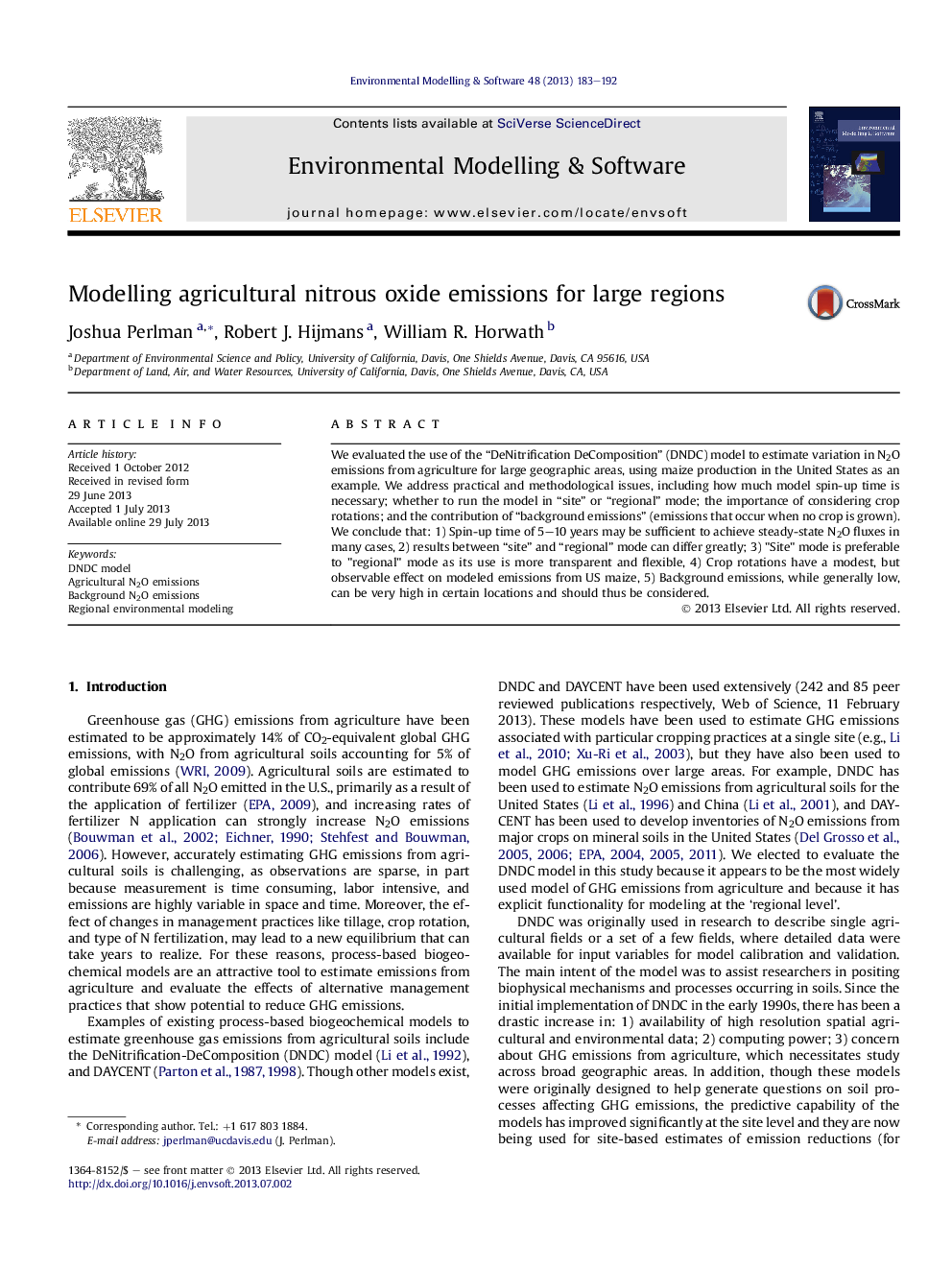| Article ID | Journal | Published Year | Pages | File Type |
|---|---|---|---|---|
| 570210 | Environmental Modelling & Software | 2013 | 10 Pages |
•Using a field-based model at the regional scale presents numerous challenges.•Exposing a model to boundary conditions can highlight areas for model improvement.•“Site” and “Regional” mode DNDC can give different results given the same data.•Open source model code is an essential resource in scientific modeling research.
We evaluated the use of the “DeNitrification DeComposition” (DNDC) model to estimate variation in N2O emissions from agriculture for large geographic areas, using maize production in the United States as an example. We address practical and methodological issues, including how much model spin-up time is necessary; whether to run the model in “site” or “regional” mode; the importance of considering crop rotations; and the contribution of “background emissions” (emissions that occur when no crop is grown). We conclude that: 1) Spin-up time of 5–10 years may be sufficient to achieve steady-state N2O fluxes in many cases, 2) results between “site” and “regional” mode can differ greatly; 3) "Site" mode is preferable to "regional" mode as its use is more transparent and flexible, 4) Crop rotations have a modest, but observable effect on modeled emissions from US maize, 5) Background emissions, while generally low, can be very high in certain locations and should thus be considered.
